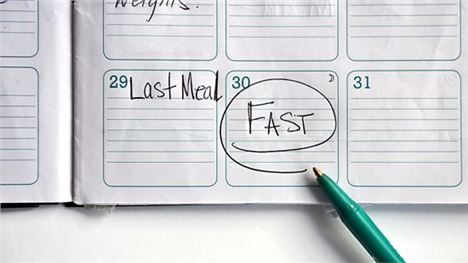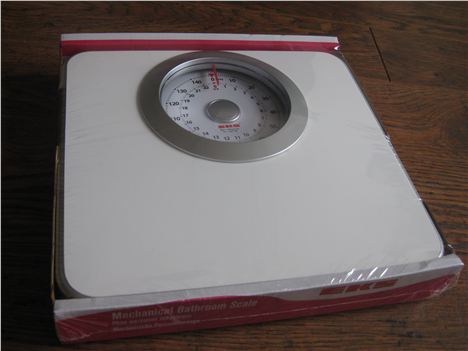MONTHS after the Horizon documentary, fasting as food fad is still going strong and Michael Mosley’s book, The Fast Diet: The Secret of Intermittent Fasting is selling like hot cakes. Mmmm…cake.
Dear baggage handler, lifting this woman will damage your spine.
Ever one to jump on a bandwagon, albeit rather tardily, I thought I might try and give this a go.
Confidential’s nutritional writer, Clare Jones, wrote about the science of fasting back in September (less tardy, see?) but the jury was still out. Click here to read Clare's article. I proffered myself as the proverbial guinea pig (perhaps ‘pig’ would be more accurate) to road test intermittent fasting. I figured that if I can stick to this diet and get results, then it can’t be that difficult.
For me, the big plus with intermittent fasting is the fact that it is intermittent.
For someone who came over all tearful at the end of the crème egg season, declaring, “I don’t feel like I made enough use of this special time”, then knowing that nothing is out of bounds for more than twenty four hours, is reassuring.
The way the diet works is this:
For two days out of every week, you restrict yourself to only 500 calories and the rest of the time you eat normally. I have chosen Tuesdays and Thursdays as my days of misery and self-abnegation. Nothing helps like a positive mindset, apparently.
But that doesn’t mean I have a calorific blowout, gorging on a Krispy Kreme donut every Tuesday and Thursday, spending the rest of the day without eating anything, hallucinating about hot, buttered toast. The idea is that you eke out the tiny amount of permitted calories over two quite austere meals.
To be honest, the fast day meals don’t sound too bad. Vegetable soup, scrambled eggs, that kind of thing. Although, I didn’t realise at first that scrambled eggs came without buttery bagels or toast. I thought they were inseparably intertwined, like bangers and mash, or Bill and Ben. It looks like I’m going to have to rethink some of my fundamentals.
As a diet virgin, there were specialist weight-watching gubbins to be bought. Namely, a pair of bathroom scales. We do have some luggage scales – like a newton meter for avoiding the wrath of Easyjet et al – and I briefly toyed with the idea of getting my husband to hold it above his head while I clung on for dear life at the bottom, but decided not to risk getting a dayglo warning sticker pasted on my forehead: Dear baggage handler, lifting this woman will damage your spine.
I have never needed scales before; either I can fasten my jeans or I can’t. If I can, brilliant. If I can’t, flowing tunic tops hide a multitude of sins, including the fact that your trousers aren’t so much fastened by the approved button and zip method, but more embedded in your flesh. Either way, they aren’t going to fall down anytime soon.
But there’s more to fasting than just jeans that fit.
It’s supposed to make skin shinier and less spotty as well as making you more alert, thus avoiding the post-lunch slump. This improvement in cognitive function actually has an evolutionary pedigree. Our cavemen and cavewomen ancestors would have hunted, gorged and then gone hungry, brain working overtime to plan the next hunt.
The nerve cells in the brain become more active when the body is hungry to try and ensure this hunger problem is resolved. Our bodies have not evolved to deal with three big meals plus snacks, they haven’t really caught on to the fact there isn’t much hunter-gathering going on, at least not in my kitchen.
So I am hoping to become bright-eyed and bushy-tailed, a fully-fledged member of Mensa and for that annoying spot in the middle of my forehead to become a thing of the past. And for those pesky jeans to fasten.
Look out for future articles to find out whether these dreams are realised.












